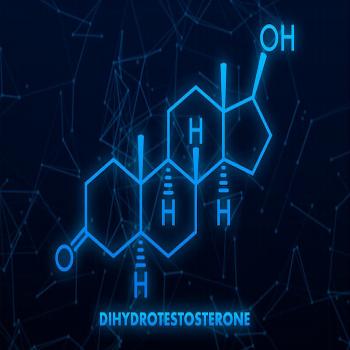What is DHT?
DHT (dihydrotestosterone) is an androgen hormone derived from testosterone, playing a pivotal role in male sexual development.
Functions of DHT:
- Contributes to the formation of male sexual characteristics during fetal development.
- Influences ongoing sexual development and characteristics throughout life, including body and pubic hair growth.
Conversion Process:
Approximately 10% of testosterone is converted into DHT daily, primarily occurring in the genital skin, prostate, and liver for individuals AMAB.
Levels and Differences:
DHT levels are naturally higher in individuals AMAB due to greater testosterone production, while its role in individuals assigned female at birth (AFAB) is less understood.
Importance of Balance:
Abnormal DHT levels can lead to various health issues, making it important to monitor and evaluate hormone levels as needed, particularly during significant life stages.
Why would I need a DHT Test?
A DHT test may be recommended for several reasons, including:
Hair loss: To investigate the cause of androgenetic alopecia (male or female pattern baldness), as high levels of DHT are often linked to hair loss.
Prostate health: To evaluate conditions such as benign prostatic hyperplasia (BPH) or other prostate-related issues that DHT levels may influence.
Hormonal imbalance: To assess hormone-related symptoms such as reduced libido, infertility, or abnormal hair growth patterns in both men and women.
Monitoring hormone therapy: For individuals undergoing treatment for hormone-related conditions (e.g., testosterone replacement therapy), the DHT test helps monitor and adjust therapy based on hormone levels.
What do the results of a DHT Test indicate?
Normal DHT levels: The reference range for DHT levels may vary depending on the lab, but typical values are:
Men: Approximately 30–85 ng/dL.
Women: Approximately 3–30 ng/dL.
High DHT levels:
In men, elevated DHT can contribute to conditions like male pattern baldness, BPH, or prostate enlargement.
In women, high DHT levels may be associated with hirsutism (excessive hair growth), acne, or polycystic ovary syndrome (PCOS).
Low DHT levels:
Low DHT in men may be linked to symptoms like reduced libido, erectile dysfunction, or low muscle mass.
Low DHT levels in women are typically not a major concern but may be evaluated as part of broader hormone testing.
